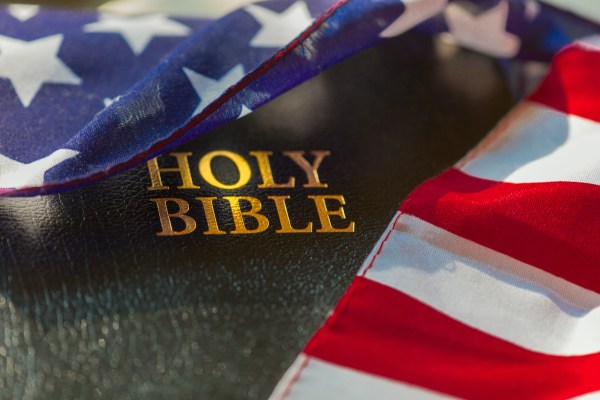In the 1952 case Wieman v. Updegraff, the Supreme Court struck down an Oklahoma law requiring state employees to certify that they had not belonged to a “subversive organization” in the previous five years. That included college professors, then among the preferred punching bags of anti-Communist politicians. In his concurring opinion, Justice Hugo Black described the Oklahoma law as, “but one manifestation of a national network of laws aimed at coercing and controlling the minds of men” during the Red Scare.
Today, some state legislatures are back at it, attempting to control what teachers say in the classroom and how they say it. Florida’s 2022 Individual Freedom Act, to take one notorious example, considers teaching to be unlawful discrimination if it “espouses, promotes, advances, inculcates, or compels [students] to believe” certain concepts. The concepts, though ill-defined, likely include reparations, affirmative action, and collective responsibility for national crimes. Florida isn’t alone: Similar laws have been proposed or enacted in several states.
Keith Whittington’s superb new book, You Can’t Teach That: The Battle over University Classrooms, explores how the courts should think about the surge of such laws. For Whittington, a Princeton University politics professor, today’s legislative attempts to curtail academic freedom constitute “perhaps the most substantial” attack on public universities “since the early days of the Cold War.” Though not necessarily more consequential than ongoing efforts to abolish tenure or shutter diversity offices, these attempts nonetheless “raise distinctive constitutional challenges.”
You might think such challenges have long been resolved. As Whittington explains, the Supreme Court has incorporated a view of the importance of academic freedom into its jurisprudence. Concurring in Wieman, Justice Felix Frankfurter called teachers “the priests of our democracy.” Democracies thrive, he argued, only if teachers foster “habits of open-mindedness and critical inquiry which alone make for responsible citizens.” To do so, they themselves must “have the freedom of responsible inquiry … into the meaning of social and economic ideas.” In subsequent cases, the court built on this claim. In 1957, in Sweezy v. New Hampshire, Chief Justice Earl Warren’s plurality opinion said that “teachers and students must always remain free to inquire, to study and to evaluate … otherwise our civilization will stagnate and die.” In 1967, writing for the majority in Keyishian v. Board of Regents, Justice William Brennan declared academic freedom “a special concern of the First Amendment, which does not tolerate laws that cast a pall of orthodoxy over the classroom.”
This precedent would seem to settle the unconstitutionality of laws like Florida’s Individual Freedom Act. What casts a pall of orthodoxy over the classroom more than threatening teachers with discipline for “advancing” such concepts as “members of one race, color, sex, or national origin cannot and should not attempt to treat others without respect to race, color, sex, or national origin”? (Say what?) Such murky language left university lawyers so confused as to what could and could not be said in classrooms that one advised professors at the University of North Florida to open discussions with a disclaimer, “The opinions stated by your fellow students do not reflect those of the College.” It’s no surprise that a Florida district court judge put the Individual Freedom Act, as it pertains to higher education, on hold in late 2022, noting the court’s “history of shielding academic freedom from government encroachment.”
But Whittington asks fellow academic freedom proponents to put our celebration on hold as well. Yes, he explains with admirable clarity and brevity, the court gives academic freedom “constitutional weight under the First Amendment.” But it has not “provided much guidance for what that should mean in practice.” That leaves specific constitutional limits on state control of public university classrooms “far from clear.”
Consider a case decided a year and a half after Keyishian. In Pickering v. Board of Education, Justice Thurgood Marshall wrote for the majority that the state has an interest in “promoting the efficiency of the public services it performs through its employees.” That interest may include “maintaining either discipline by immediate superiors or harmony among coworkers,” or ensuring “the teacher’s proper performance of his daily duties.” But it must be balanced against a teacher’s First Amendment interest in speaking about matters of public concern. In Pickering, the balance came out in the teacher’s favor—but it needn’t always.
Pickering concerned a teacher’s speech outside of the classroom. One might think that a teacher’s speech inside the classroom, being at the core of the court’s concerns in Keyishian, is better protected. Not necessarily. In the 2006 case Garcetti v. Ceballos, Justice Anthony Kennedy’s majority opinion denied that the First Amendment forbids “managerial discipline based on an employee’s expressions made pursuant to official responsibilities.” That makes sense. How, for example, could a mayor’s office run if his press secretary felt free to denounce him during press conferences? When fulfilling his official duties, a press secretary isn’t a citizen commenting on matters of public concern. He is a talker for hire.
Garcetti was about a district attorney’s office, not a university, and Justice Kennedy’s opinion did “not decide whether [Garcetti] would apply in the same manner to a case involving speech related to scholarship or teaching.” But lower courts, Whittington informs, have applied Garcetti in a manner most unfriendly to public K-12 teachers, treating them in the classroom as hired verbal guns. Take a 2007 case from the 7th U.S. Circuit Court of Appeals as an example. In it, an elementary school teacher’s contract was not renewed because—during a current-events lesson and in response to a student’s question—she mentioned that she had honked her car horn for peace as she drove past an anti-Iraq War demonstration. In a ruling against the teacher, Chief Judge Frank Easterbrook wrote for the court that K-12 teachers “hire out their own speech.” School districts can dictate “not only the prescribed subject matter” to be delivered in classrooms, “but also the prescribed perspective” on it.
Still, Judge Easterbrook’s opinion explicitly left unresolved the “open” question of “how much room is left for constitutional protection of scholarly viewpoints in post-secondary education.” Whittington thinks this question should be resolved by building “on existing doctrine.” First, as some lower courts have recognized, there must be an academic freedom exception to Garcetti, a possibility contemplated in that decision. The claim that the Constitution “does not tolerate laws that cast a pall of orthodoxy” over college classrooms cannot be reconciled with the claim that professors are government mouthpieces. Second, when weighing the government’s interests against the First Amendment interests of professors, as Pickering requires, the distinctive character of universities—assumed in the court’s academic freedom decisions—must be considered. K-12 schools have long been, Whittington observes, “under the direct political control of public bodies.” In contrast, the court has recognized the relative independence from direct political control that modern universities have by now long enjoyed.
Professors cannot be effective pursuers and transmitters of knowledge if politicians tell them what to say. In the classroom, they are different from other kinds of public employees. The state has a legitimate interest in mandating aspects of the curriculum, ensuring that professors are competent, and demanding that their classroom speech be germane to the course. (A physics professor can be disciplined for turning Quantum Mechanics 101 over to the People’s University for Gaza.) But beyond these and a few other matters, the “state’s legitimate interest in sanctioning professors for [classroom] speech is quite low.” Indeed, laws like the Individual Freedom Act—although presented as mere employer-employee relations by Florida’s lawyers—are best understood as attempts by the state to control what citizens can think by controlling what young people are taught. But preventing political control of universities for this purpose is at the heart of Keyishian and related cases.
When the Supreme Court recognized the idea of academic freedom—whose emergence accompanied the emergence of modern universities—it contributed much to the excellence of public higher education in America. But there is a weak spot in the legal case for academic freedom. Whittington’s claim that “there are meaningful limitations on the authority of legislatures” to control their universities’ classrooms includes an escape clause: “at least as those universities are currently constituted.” The Constitution, Whittington concedes, does not say what kinds of universities states have to have or prevent them from deciding to run them more like primary and secondary schools. Indeed, modern universities, though they serve the advancement of knowledge, also practice civic education—work that may justify a higher degree of state control than the simple pursuit of the truth.
Even so, as Whittington observes, no state has chosen to conduct higher education in anything like the same manner as they conduct K-12 schools. Whittington’s analysis suggests that they will have to be upfront about any decision to do so. In the AAUP’s 1915 Declaration of Principles on Academic Freedom and Academic Tenure, the authors acknowledge that propagandizing colleges exist. But they insist that such institutions, in pleading for public support, should not be “permitted to sail under false colors,” to pretend to be genuine universities. The gamble of the argument Whittington makes is that states have enough to gain, economically and reputationally, from housing modern universities, that they will not want to pay the cost of openly converting them to Sunday schools. That is probably a good bet.








Please note that we at The Dispatch hold ourselves, our work, and our commenters to a higher standard than other places on the internet. We welcome comments that foster genuine debate or discussion—including comments critical of us or our work—but responses that include ad hominem attacks on fellow Dispatch members or are intended to stoke fear and anger may be moderated.